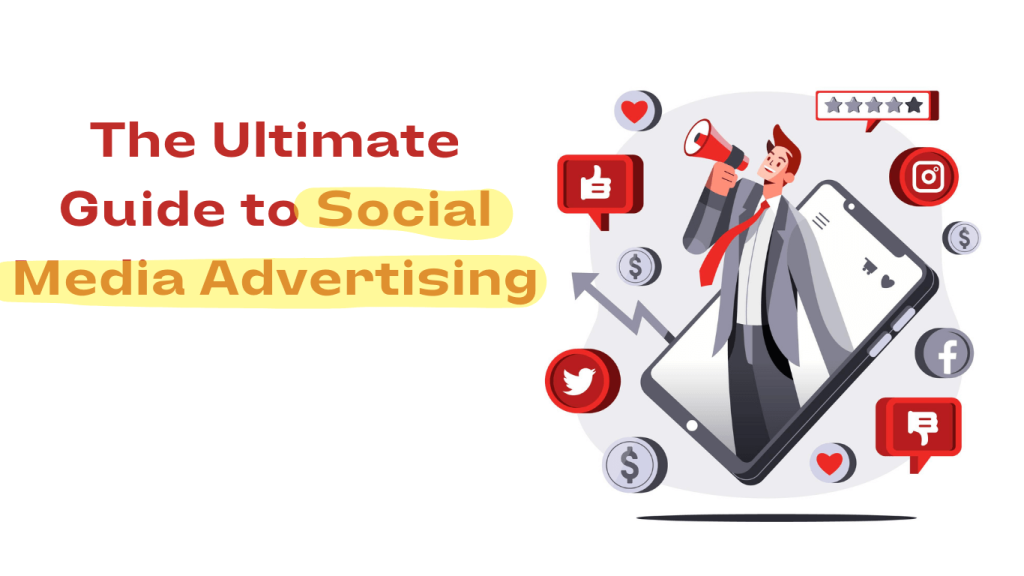Introduction
In today’s digital age, social media has become an integral part of our lives. With billions of users worldwide, platforms like Facebook, Instagram, Twitter, LinkedIn, and YouTube offer tremendous opportunities for businesses to reach their target audience. This guide will walk you through the essentials of social media advertising and provide valuable insights to boost your business.

Understanding Social Media Advertising
What is Social Media Advertising?
Social media advertising refers to the process of promoting products, services, or brands on social media platforms. It involves creating and running targeted advertisements to reach specific audiences based on their interests, demographics, and behaviors. Social media advertising offers businesses a cost-effective way to raise awareness, drive traffic, and generate leads.
Benefits of Social Media Advertising
Social media advertising offers numerous benefits for businesses of all sizes. Firstly, it provides unparalleled reach and targeting options, allowing you to connect with your ideal customers. Additionally, it enables precise tracking of campaign performance, providing valuable insights for optimization. Moreover, social media advertising is highly cost-effective compared to traditional advertising channels, making it accessible to businesses with varying budgets.
Choosing the Right Social Media Platform
When it comes to social media advertising, choosing the right platform is crucial. Each platform has its own unique features, audience demographics, and advertising options. Here are some popular platforms and their key characteristics:

Facebook Advertising
Facebook boasts the largest user base among social media platforms, making it a powerful advertising tool. It offers sophisticated targeting options, allowing you to reach specific demographics, interests, and behaviors. Facebook Ads also provide various ad formats, including image ads, video ads, and carousel ads, to engage your audience effectively.
Instagram Advertising
As a visually-driven platform, Instagram is ideal for businesses targeting younger demographics or those in creative industries. Instagram offers several ad formats, including photo ads, video ads, and Stories ads. It also integrates seamlessly with Facebook’s ad platform, making it easy to manage campaigns across both platforms.
Twitter Advertising
Twitter is known for its real-time conversations and trending topics. It offers advertising options such as promoted tweets, promoted accounts, and promoted trends. Twitter’s targeting capabilities allow you to connect with users based on keywords, interests, and demographics.
LinkedIn Advertising
LinkedIn is a professional networking platform that caters primarily to business-to-business (B2B) advertisers. It offers precise targeting options based on job titles, industries, and company sizes. LinkedIn Ads enable businesses to promote their services, generate leads, and build professional relationships.
YouTube Advertising
As the world’s second-largest search engine, YouTube presents immense advertising opportunities. It offers various ad formats, including skippable and non-skippable video ads, display ads, and bumper ads. YouTube’s targeting options allow you to reach specific demographics and interests based on users’ search behavior.
Setting Advertising Goals and Objectives
Before launching a social media advertising campaign, it is crucial to define clear goals and objectives. Here are some common objectives businesses aim to achieve:
Increasing Brand Awareness
One of the primary goals of social media advertising is to increase brand awareness. By reaching a broader audience and showcasing your brand’s unique value proposition, you can enhance brand recognition and visibility.
Driving Website Traffic
Social media advertising can be an effective way to drive traffic to your website. By creating compelling ads that entice users to click through, you can increase website visits, explore pages, and engage potential customers.
Generating Leads
Lead generation is a vital aspect of many businesses’ marketing strategies. Social media advertising offers lead generation tools like lead forms, allowing you to capture user information and nurture leads through targeted follow-up campaigns.
Increasing Sales and Revenue
Ultimately, social media advertising aims to contribute to your bottom line by increasing sales and revenue. By driving targeted traffic to your website and optimizing conversion processes, you can generate more sales and boost business growth.
Targeting the Right Audience
To maximize the effectiveness of your social media advertising campaigns, it is essential to target the right audience. Here are some key targeting options to consider:
Demographic Targeting
Demographic targeting involves narrowing down your audience based on factors such as age, gender, location, and language preferences. This allows you to tailor your advertisements to specific segments of your target market.
Behavioral Targeting
Behavioral targeting focuses on users’ online behaviors and activities. By analyzing data such as search history, website visits, and purchase behavior, you can target individuals who exhibit specific actions or interests related to your products or services.
Interest-Based Targeting
Interest-based targeting involves reaching users who have expressed interest in specific topics, hobbies, or industries. Platforms like Facebook and Twitter provide interest targeting options based on users’ likes, follows, and engagement.

Creating Compelling Advertisements
To capture users’ attention and drive engagement, your social media advertisements must be compelling and well-crafted. Here are some key elements to consider:
Attention-Grabbing Headlines
Craft concise and attention-grabbing headlines that entice users to learn more. A strong headline can make a significant impact on click-through rates and overall ad performance.
Engaging Visuals
Visual content is a powerful tool in social media advertising. Use eye-catching images, videos, or infographics that resonate with your target audience and effectively communicate your message.
Persuasive Ad Copy
Write persuasive ad copy that highlights the unique benefits of your products or services. Focus on how your offerings can solve problems, fulfill desires, or improve the lives of your potential customers.
Monitoring and Optimizing Campaigns

Once your social media advertising campaigns are live, continuous monitoring and optimization are essential for success. Here are some key practices:
Tracking Key Metrics
Monitor key metrics such as impressions, clicks, conversions, and return on ad spend (ROAS). Analyzing these metrics provides insights into campaign performance and helps identify areas for improvement.
A/B Testing
Conduct A/B testing by creating multiple versions of ads and testing them against each other. This allows you to identify the most effective ad elements and refine your campaigns accordingly.
Adjusting Ad Spend
Regularly review and adjust your ad spend based on performance. Allocate more budget to well-performing campaigns and optimize or pause underperforming ones.
Best Practices for Social Media Advertising
To maximize the effectiveness of your social media advertising efforts, consider the following best practices:
Testing and Experimentation
Continuously test different ad formats, targeting options, and creatives to find the most effective combinations. Experimentation is key to discovering what works best for your audience.
Adapting to Algorithm Changes
Stay up to date with social media platform algorithm changes and adjust your strategies accordingly. Algorithm updates can impact the reach and performance of your ads, so it’s important to adapt and optimize your campaigns accordingly.
Building Relationships with Followers
Engage with your audience by responding to comments, messages, and mentions. Building relationships with your followers creates brand loyalty and can lead to organic growth and word-of-mouth recommendations.
Conclusion
Social media advertising offers businesses a powerful means to boost their online presence, connect with their target audience, and achieve their marketing objectives. By understanding the nuances of each social media platform, setting clear goals, targeting the right audience, and creating compelling advertisements, businesses can leverage the full potential of social media advertising to drive brand awareness, increase website traffic, generate leads, and ultimately boost sales and revenue.
